Those of us old enough to drink wine have seen at least one significant change in the most popular style in clothing, hairstyles, music, etc. Many of us have seen several complete stylistic changes that seem to come full-circle. My own ‘flannel shirt and jeans uniform’ has now made three appearances at approximately 20 year intervals with different names. In the ‘70’s it was simply ‘worker’s wear.’ In the ‘90’s the Seattle Grunge Rock Scene brought it back accessorized by uncombed hair and infrequently shaven faces. The current manifestation is with full beards and/or well-waxed handlebar moustaches. Always the rebel, I chose to channel Zappa (who was brilliant) for the facial hair.
So it goes with wine. The most recent trend of the popular style inching toward higher alcohol/higher ripeness beginning in the 1990’s led to a natural and expected reaction of favoring lower alcohol/lower ripeness wines in certain quarters. However, rather than the pendulum gently swinging back thru the happy & balanced middle where we have been, it looks like a quantum leap from one extreme to the other. Interestingly, some of the very producers who were on the vanguard of the race to riper and richer suddenly ‘saw the light’ and led the way to leaner and greener pastures certain that their [now current] viewpoint is the most “correct”.
Lemme ‘splain how my viewpoint evolved. Right after High School and concurrent with University studies, I worked at Field Stone Winery where Andre Tchelistcheff was our consultant for much of those years. He directed us to purchase and taste certain classic wines in order to have a frame of reference for our own work. We were not charged to copy those wines. Instead, we were subliminally inspired by them, seeing the different expressions of the vinifera varieties we were working with in different locations. It took me years to fully understand this message (some of us move slowly). But the experience did a lot to calibrate my palate even without my realizing it at the time.
Download complete newsletter: ‘Quantum Theory of Style’

